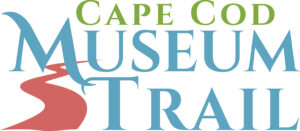Aptucxet Trading Post may have the earliest remains of a Pilgrim building. The known facts present a fascinating story, not only of an antique building but also of Bourne’s participation in 17th-century events.
Bourne Historical Society
The Aptucxet Trading Post structure existing today is a replica erected on the original foundation which was archaeologically excavated in the 1920′s, and is surrounded by 12 acres of recreational land.
Aptucxet Trading Post may have the earliest remains of a Pilgrim building. The known facts present a fascinating story, not only of an antique building but also of Bourne’s participation in 17th-century events.
Manamet River visited by Leif Ericson
Manamet Portage across the isthmus must be very ancient as the native name “Manamet” signifies “Trail of the burden carriers.”
The Pilgrims knew of it early, because the Billington boy, having been lost in the woods in 1621, was found by the natives at Manamet and kept there before being taken further down the Cape.
Governor Bradford found the much-needed corn and beans at Manamet and left it there in the care of Caunacum, the Sachem of Manamet until Capt. Standish could get it.
Here is a chronology of the trading post:
1627: Trade House founded by Plymouth Colony.
1627: Isaac DeRaasiere visited Aptucxet October, 1627 on board his barque “Nassau”. Introduction of Wampumpeag.
1633: Frame for the Plymouth Colony’s third trade house at Metteneque (Windsor Locks, CT), is constructed at Aptucxet, put on board their barque and transported to the Connecticut River.
1635: Great storm took off roof of a building at the Post, carrying it from its foundation, leaving the posts still standing in the ground; could not have been the trade house itself for its foundations were of stone; more likely it was a shed or a hog pen.
1654: Captain Standish ordered to assemble a company of men at Manamet and embark on the barque Adventer on an expedition against the Dutch at Manhattan. This was never carried out as peace between England and Holland was declared, for the time being.
1655: First recorded transfer of the Trading Post land – from Keene’s book: page 55.
Circa 1663: Ezra Perry (1) bought of his father-in-law Thomas Burgess, the western part of his 1652 grant, which consisted of land lying mostly on the south of Manamet River and which extended nearly to the river’s mouth.
1852: Site partially excavated by Dr. John Batchelder of Bourne and William S. Russell of Plymouth.
1882: August 8: Cape Cod Historical Society held a clambake at Buzzards Bay when Judge Thomas Russell, President of the Pilgrim Society at Plymouth for many years, made an address and placed a flag at the site of the old Trading Post.
1921: December 29: Bourne Historical Society was incorporated under the laws of Massachusetts to acquire the site of Aptucxet and make excavations.
1926: October and November: President Percival H. Lombard and Vice President Nathan Bourne Harford made complete excavations, uncovering the entire foundations and many relics.
1930: May and June: Restoration of foundations and erection thereon of a replica of the Trading Post, undertaken through the generosity of the General Society of Mayflower Descendants and friendly citizens, by the Bourne Historical Society; the work was done by Eugene M. Dow of Topsfield, MA.
1930: September 3: Building dedicated.

Leave A Comment